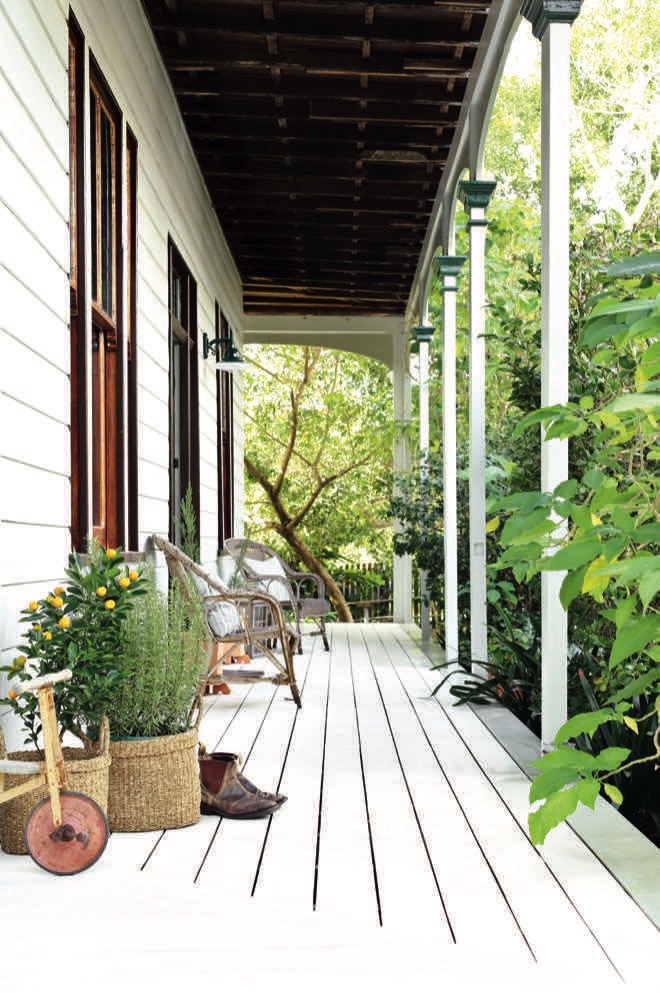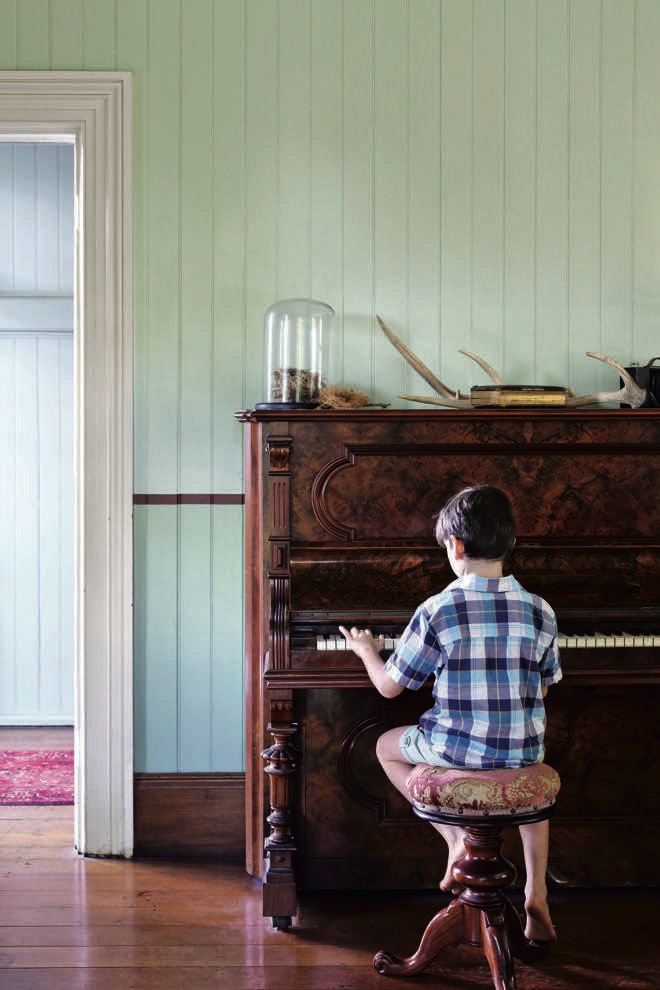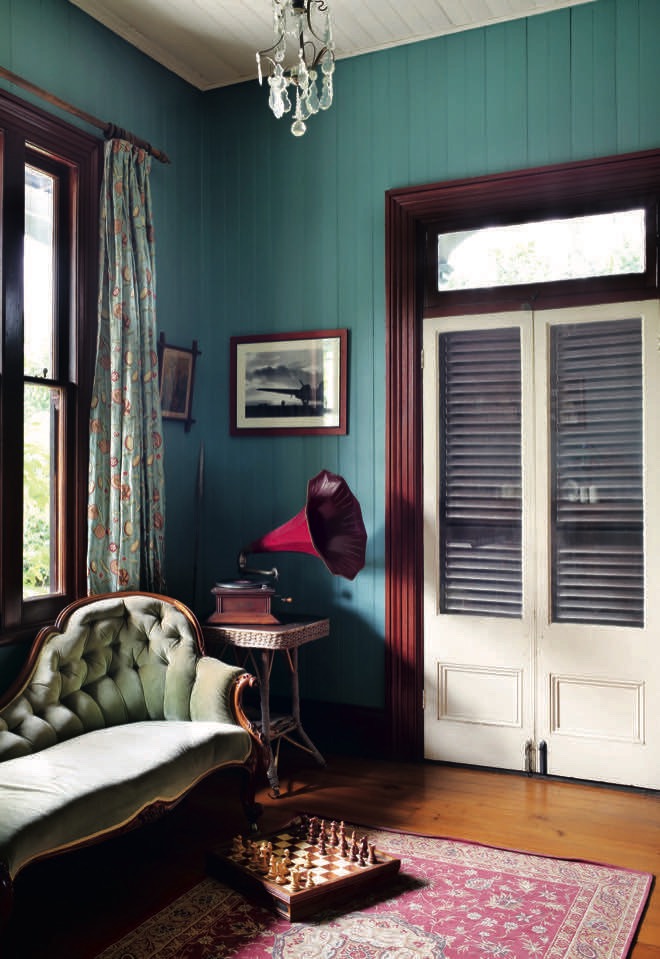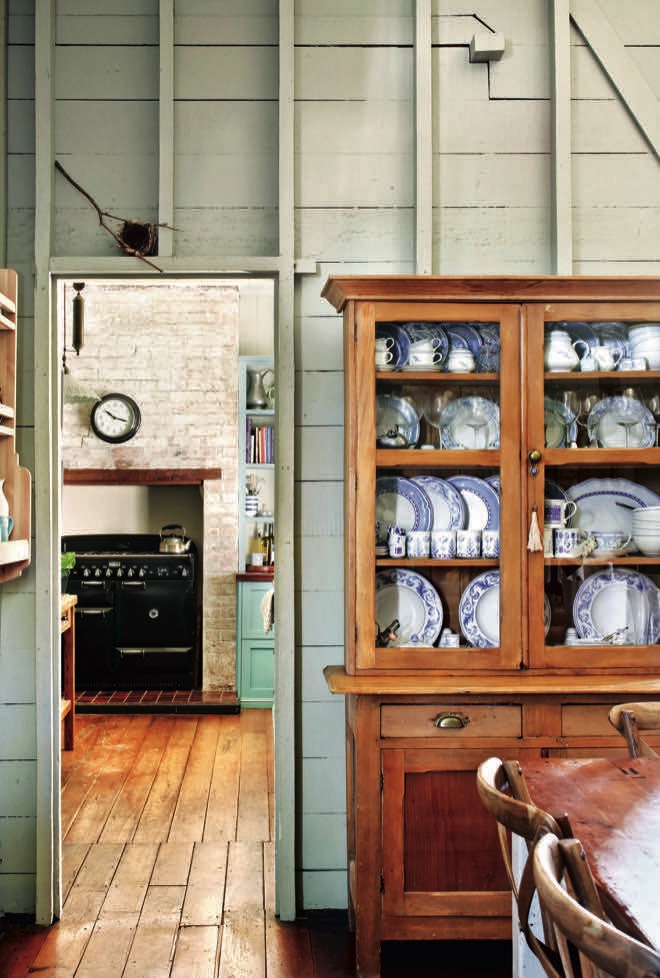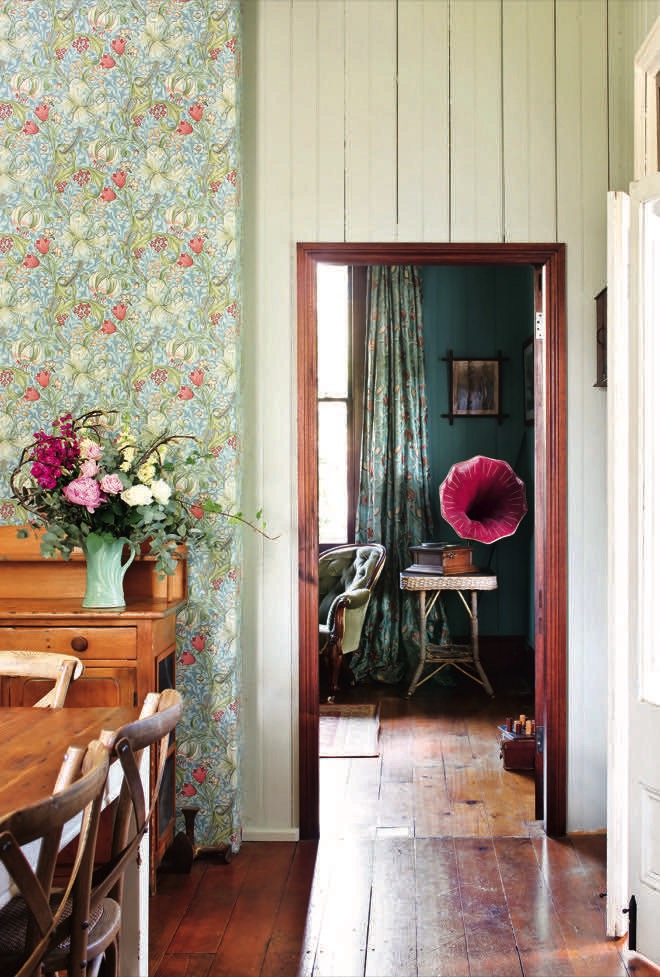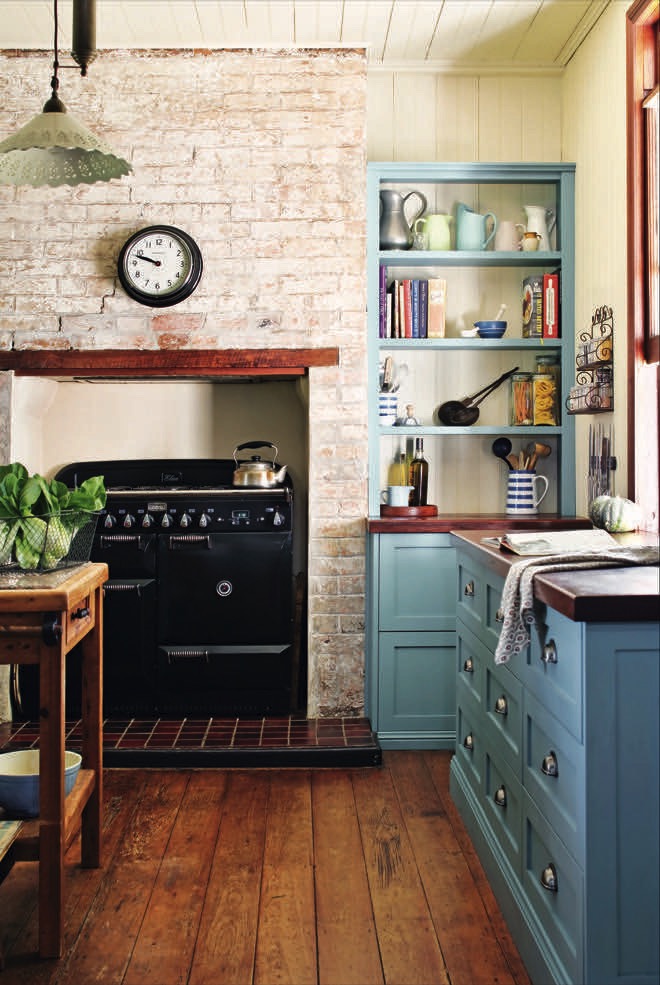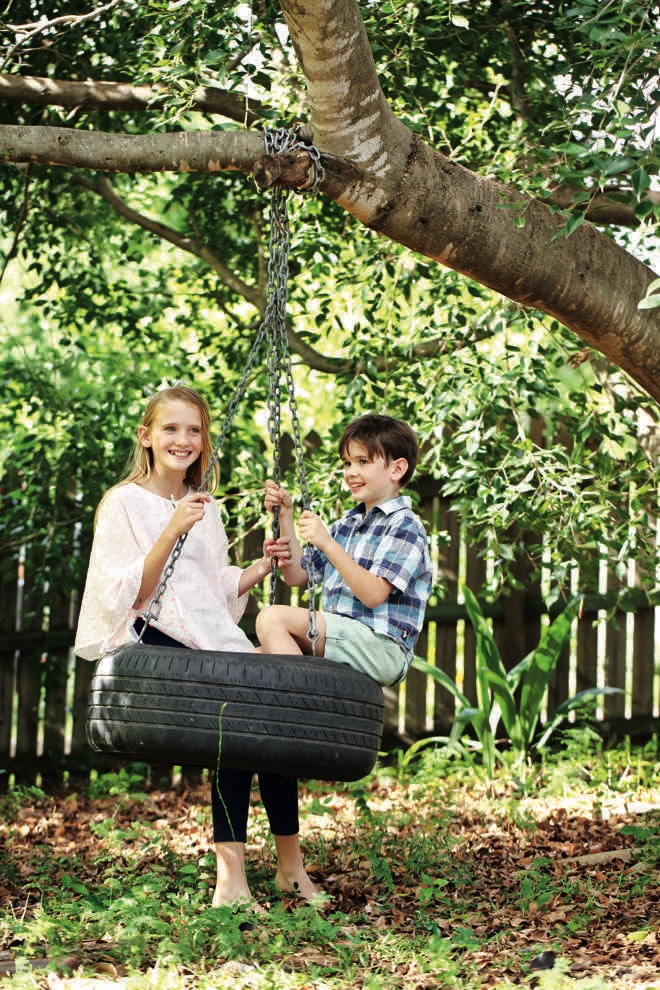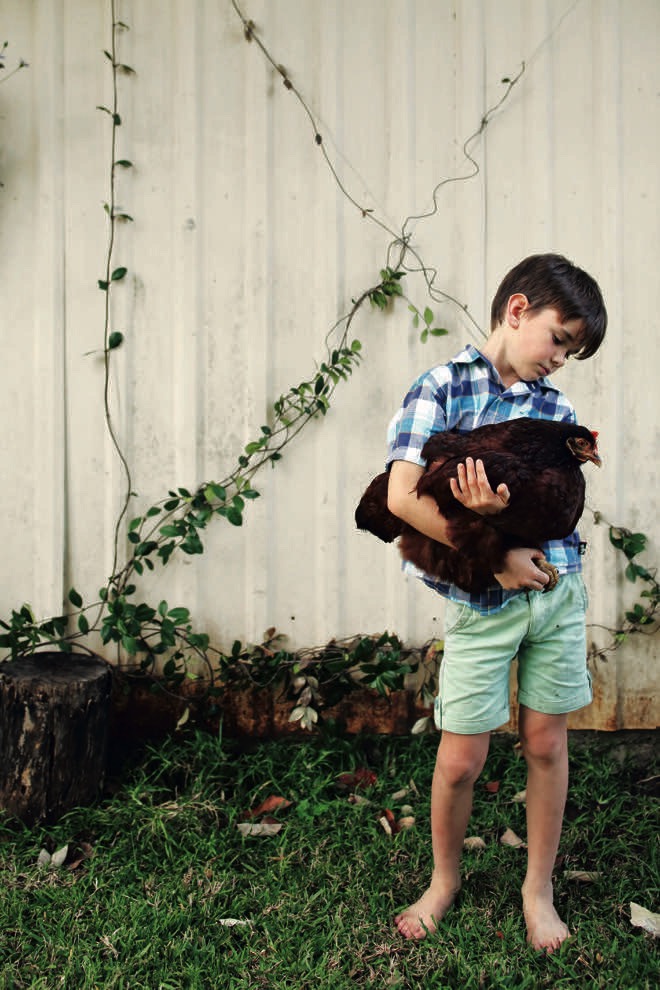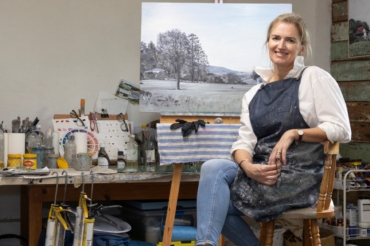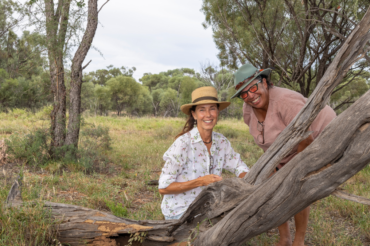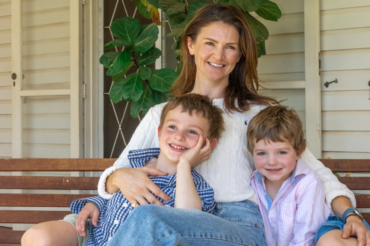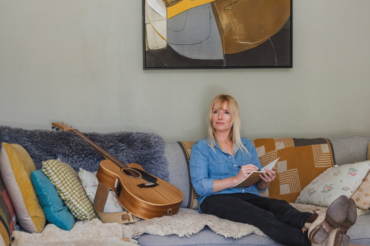
Andrea and Peter Ferrando never know who might knock on their front door. Their home has stood since 1883, built as a manse for the Central Congregational Church during the pioneering days of Ipswich. It has sheltered scores of people in its time, some who can’t help opening the rustic front gate to take a trip down memory lane. “We had a man who was in his 90s visit us, and he had lived in the home in the 1930s as a young boy,” says Andrea of one particularly memorable guest. “In fact, he and his family were the last to live in the building as a manse. His dad was a pastor and after his family left, the house was turned into flats.”
The old man’s visit soon turned into a journey back in time for the couple and their three kids, Emily, Alice and Henry, who were all intrigued with his tales of days long gone within the walls they now call home. “He even remembered the camellia bushes [at the entry] and told us how he and his brother used to pull the buds off the bushes and throw them at each other,” Andrea says. “He gave us a photograph of him and his dog at the front of the camellia bushes — just as they are today. He also sent us photographs of his family outside the house and told us many stories about life in the street and which room was which.” His stories, and any part of the old manse’s history that Andrea and Peter can manage to dig up is cherished, and woven into their quest to bring the home back to its former glory. They’ve embraced every time-worn imperfection — opting for restoration over renovation. “We want the house to look its age and to capture the narrative of the home,” Andrea explains. “We have repaired where we can. We have had to resist the temptation to follow the latest trends and let the house guide us.”
Paint scrapings from heritage architects have been colour-matched, floors have been stripped on hand and knee to their original boards, and wallpaper and drapery sourced from the archives of the Victorian-period design kingpin, William Morris. Even weathered and rotting supports that had to be replaced have been reborn as kitchen benches. “We have treated the house as if it is an antique — don’t remove the patina and just repair where absolutely necessary,” Peter says. “We have remained true to the home’s design, respecting the architect’s original intent and the features of the Victorian period.”
The home was designed and constructed by a member of the original church, architect Samuel Shenton, who later became the mayor of Ipswich. His brief was to create something that would be a credit to the denomination — the first of its kind in Queensland, joining several similar faiths to form one parish due to the low population at the time. In the 1930s it was sold and turned into flats, later housing returned soldiers after World War II. Rooms were rearranged, and Andrea and Peter have found telltale signs on the old timber floor. “There were markings in the floor where there was a bath in the big lounge and many little rooms were created,” Andrea says. “We have had many people come by saying they lived in the house when there were flats here and one gentleman told us that he was one of the people who removed the original stairs to build an air-raid shelter in the backyard. Another guy told us that he had a tiny room under where the stairs had been.”
Remarkably, the exterior has endured, and it was heritage-listed in 1992. Decades on, and the interior has become a living tribute to the architecture, resourcefulness and design trends of the time, thanks largely to Andrea and Peter’s passion and persistence. And thanks to a fateful day seven years ago when a meeting with a builder to discuss the beginning of a renovation on another home fell through at the last minute. With their morning now freed up, the couple made what turned into a life-changing decision. “We went to see the manse for its first open house. Peter walked through and said, ‘Let’s buy it’,” Andrea recalls. We offered the asking price that day and that was it.”
They’ve been toiling away on their diamond-in-the-rough ever since. “The kitchen floor was 70mm out of level from one side to the other,” Peter says. “There was a lot of rot and some rotten boards on the verandah had been overlaid with tiles and some of the handrails downstairs were metal.”
They’ve sought out specialist tradespeople to right the wrongs of the decades of adjustments, and spent countless weekends stripping, repainting and polishing. “We have a philosophy of peeling back and revealing the house’s original finishes, along with its scars,” Peter says. It’s a process that has captured the imaginations of Andrea and Peter’s children along the way, and forever stamped the names of a tireless and dedicated couple into the pages of a piece of Queensland history. “We are just passing through,” Andrea says. “There will be just as many people living in the house after us, as have lived in it before us.”
The complete story was originally published in Australian Country issue 21.2. Click here to subscribe to our magazine
Words Tamara Simoneau
Photography Anastasia Kariofyllidis

